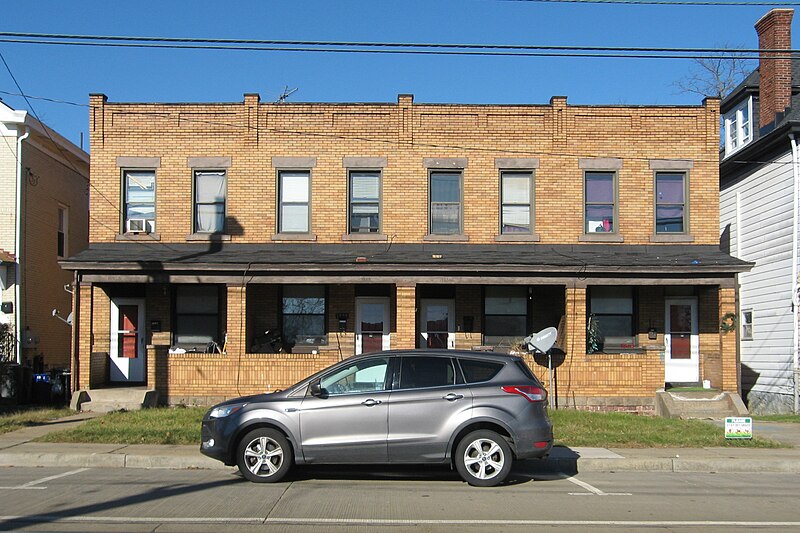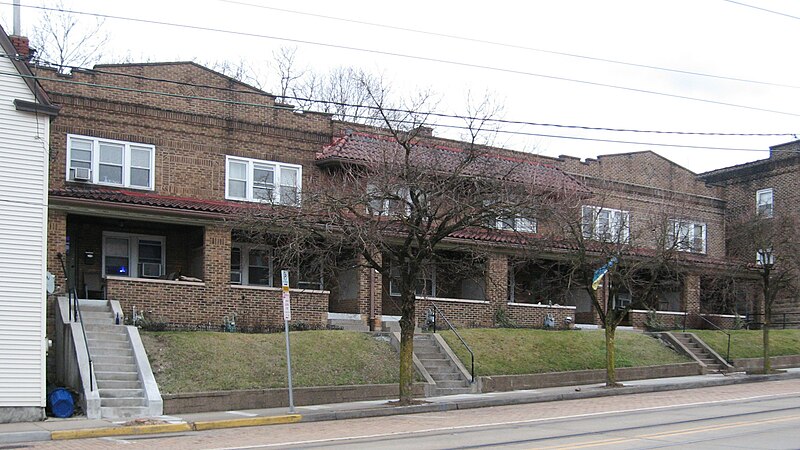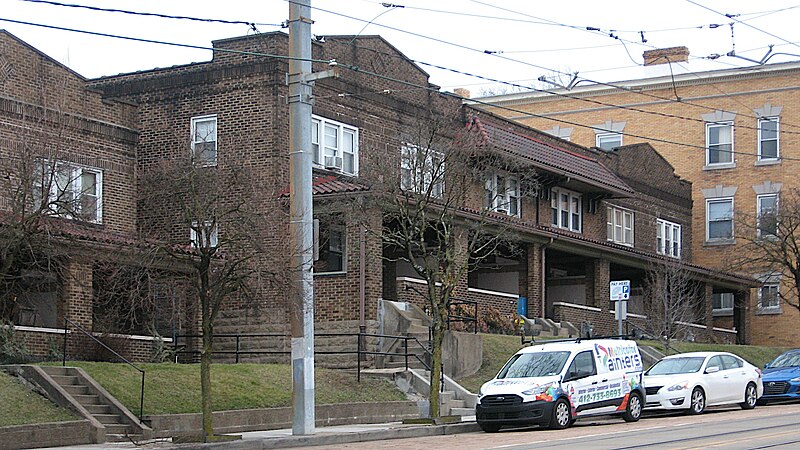
It sounds like a good name for a 1930s Warner Brothers musical, but we’re talking about the Broadway in Beechview, where the streetcars still run on the street. One of the characteristic forms of cheap housing in Pittsburgh streetcar neighborhoods is the rowhouse terrace, where a whole row of houses is built as one building. “This method of building three or six houses under one roof shows a handsome return on the money invested,” as an article about the Kleber row in Brighton Heights put it. In other words, here is a cheap way to get individual houses for the working classes.
Architecturally, it poses an interesting problem. How do you make these things cheap without making them look cheap? In other words, how do you make them architecturally attractive to prospective tenants?
In the row above, we see the simplest and most straightforward answer. The houses are identical, except for each pair being mirror images, which saves a lot of money on plumbing and wiring. The attractiveness is managed by, first of all, making the proportions of the features pleasing, and, second, adding some simple decorations in the brickwork.
Architects (or builders who figured they could do without an architect) often repeated successful designs for cheap housing, making it even cheaper. A few blocks away is an almost identical row.

The wrought-iron porch rails are later replacements, probably from the 1960s or 1970s, but the shape, size, and decorative brickwork are the same, except that here we have nine decorative projections along the cornice instead of five.
Now here is a different solution to the terrace problem:


Here we have two rows of six houses each. Once again, the houses are fundamentally identical, except for half of them being mirror images of the other half. But the architect has varied the front of the building to make a pleasing composition in the Mission style, which was very popular in the South Hills neighborhoods in the early 1900s. Instead of a parade of identical houses, we get a varied streetscape with tastefully applied decorations that are very well preserved in these two rows.
Incidentally, terrace houses like these look tiny from the front, but they often take full advantage of the depth of their lots to provide quite a bit of space inside. They are common in Pittsburgh because they were a good solution to the problem of cheap housing: they gave working families a reasonably sized house of their own that they could afford.

Leave a Reply